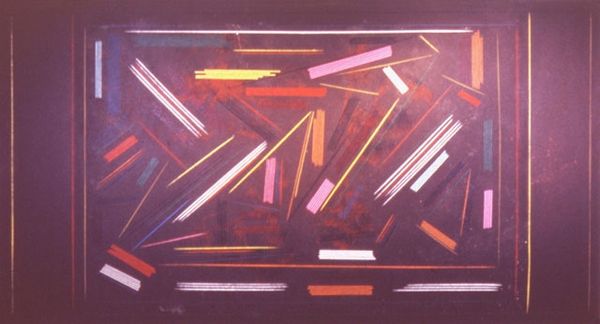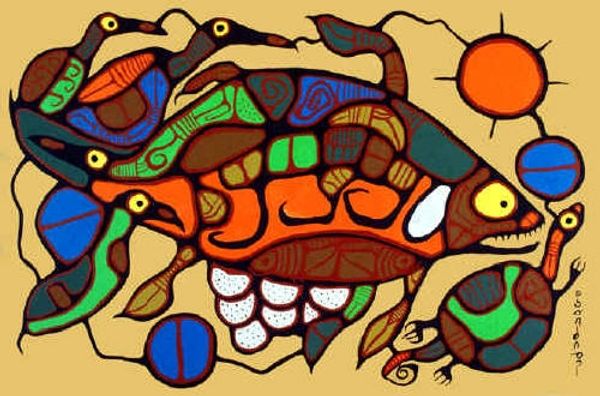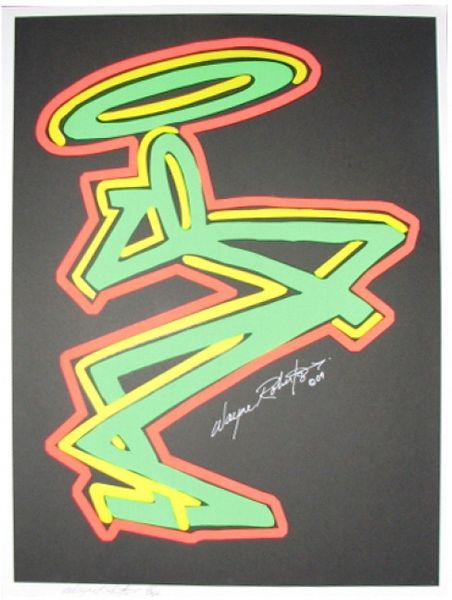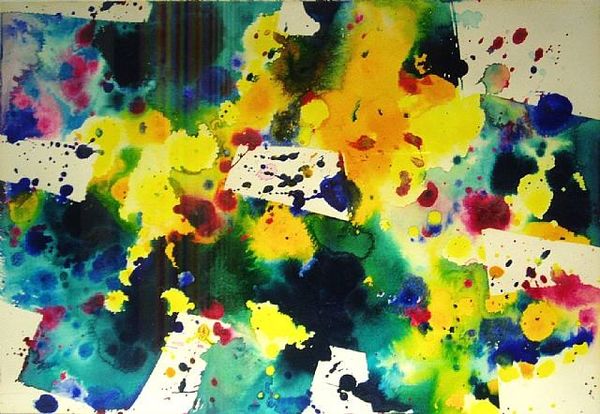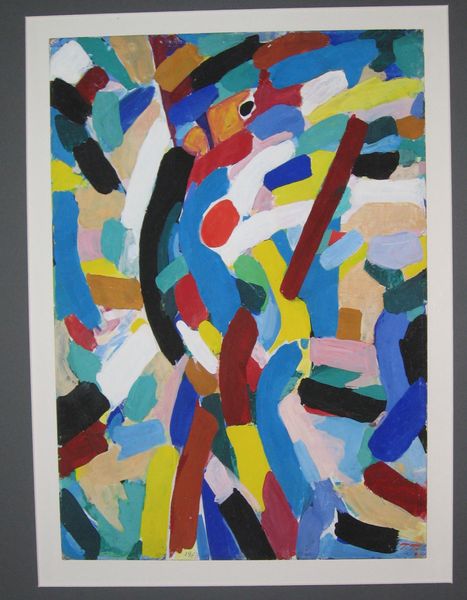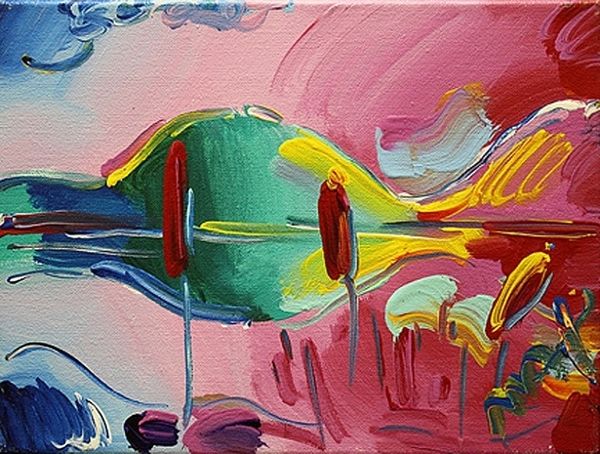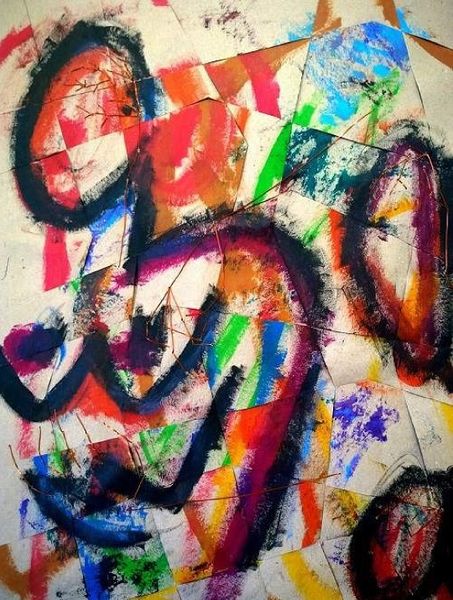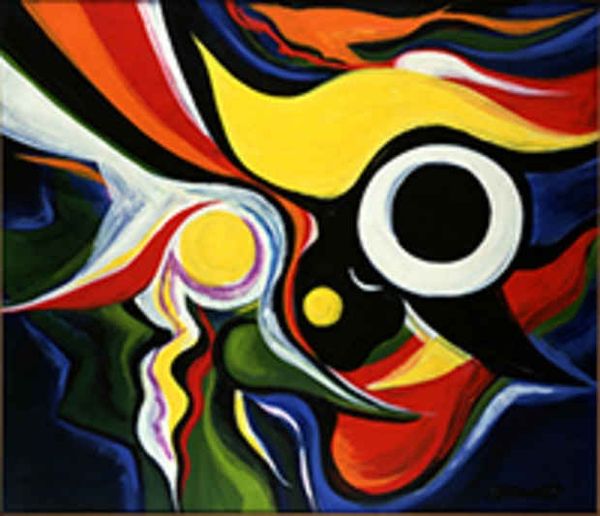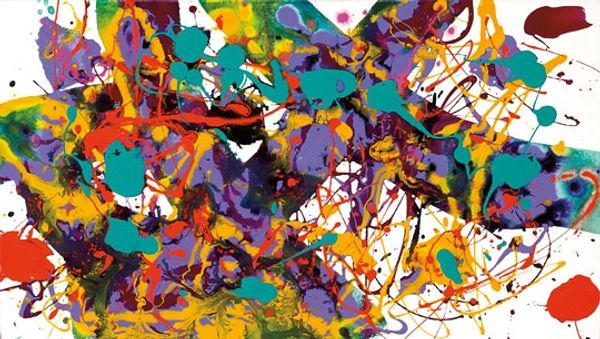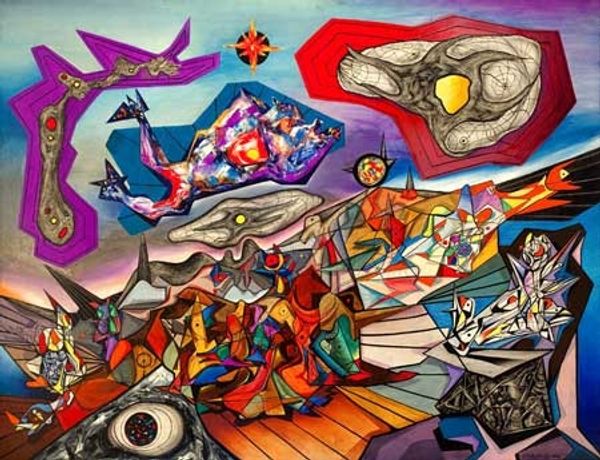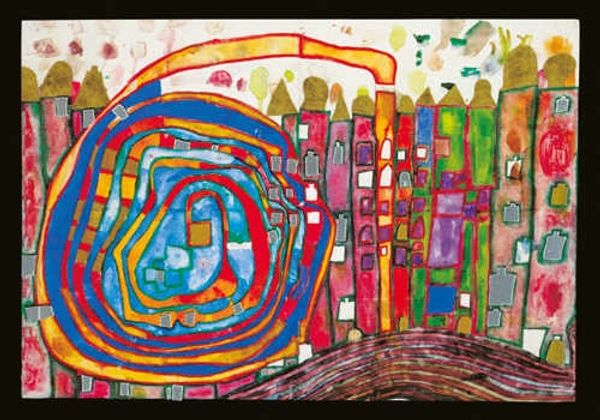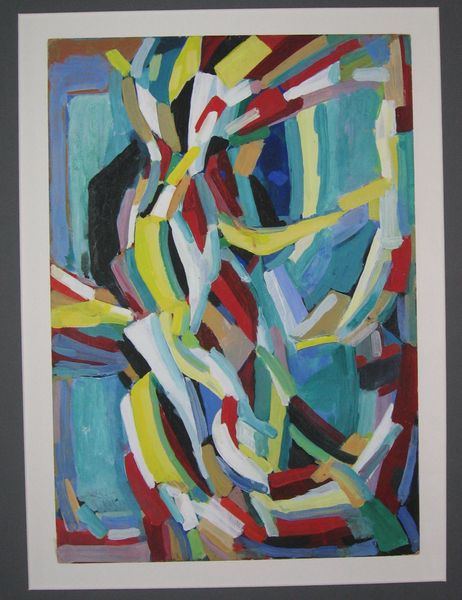
#
neo-pop
Copyright: Keith Haring,Fair Use
Curator: This vibrant acrylic on canvas, known simply as "Untitled," was created by Keith Haring in 1987. What are your initial impressions? Editor: Pure energy! It’s like the visual equivalent of a city block pulsing with life, bodies entwined, radiating a frenetic kind of joy. All these colours! It’s visually very dense. Curator: Density is key, reflecting Haring's immersion in the bustling, and often fraught, street culture of 1980s New York. Remember, he made his name drawing in the subway. How do you feel that impacts our interpretation of this work? Editor: Precisely, considering how public spaces can simultaneously enable self-expression and become sites for protest. I see this “Untitled” piece less as a carefree celebration and more of a coded, visual commentary. Look at the intertwined figures – might they be a metaphor for interconnectedness but also perhaps struggle? Curator: Interesting point. He exhibited extensively in galleries and museums of course, so in looking at its reception we should really also understand his commitment to making his art accessible outside of institutional contexts, by incorporating his art in public spaces. The imagery is simplified, almost like pictograms, to transcend language and speak to a broad audience. Editor: It’s so direct! And I love your comment about “transcendence” and think about Haring's use of primary colors combined with bold black lines really calls back to Pop Art. Do you believe it trivializes the message, presenting them too passively? Curator: I disagree. The seemingly playful aesthetics could actually act as a Trojan horse, smuggling subversive themes past conventional barriers. Through figuration and his cartoonish abstraction, Haring opens a space for us to interpret a whole host of themes: power, sexuality, alienation. Editor: This work embodies Haring's socio-political commentary in a uniquely accessible visual language that broke boundaries between the elite art world and popular culture. Its accessibility might actually mask how deeply thoughtful it really is. Curator: Absolutely. Ultimately, viewing Haring’s “Untitled” allows us to reflect on art’s ongoing function, both then and now. Editor: To see how even a playful pattern on canvas might reflect, and hopefully push us to re-examine the intersecting complexities defining human relations.
Comments
No comments
Be the first to comment and join the conversation on the ultimate creative platform.
